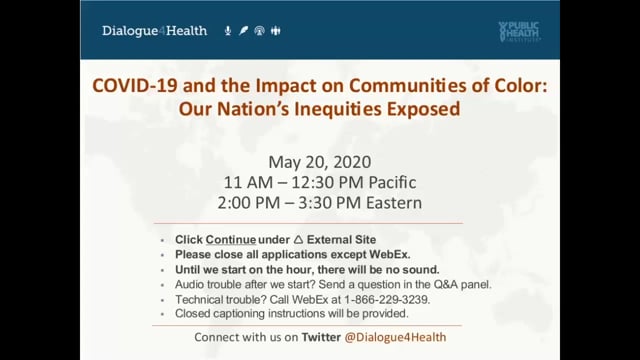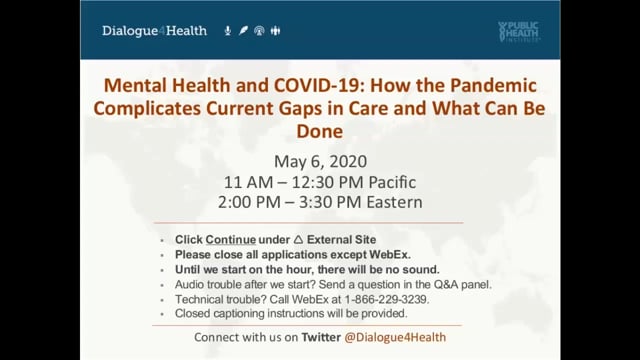(Washington, DC – April 21) – Trust for America’s Health (TFAH), a non-partisan, independent public health policy, research and advocacy organization, applauds the introduction of the Improving Social Determinants of Health Act of 2020 for the critical ways it would address the social, economic and environmental conditions that affect health and wellbeing and drive improved health for millions of Americans.
If enacted, the bill would create a Social Determinants of Health (SDOH) Program at the Centers for Disease Control and Prevention (CDC). Through grants, this program would improve the capacity of public health departments and community organizations to address social determinants of health and reduce health care costs by building multi-sector collaborations and addressing policies that currently inhibit good health. Grants would also be issued to nonprofit organizations and institutions of higher education to conduct research on SDOH best practices, provide technical, training and evaluation assistance and/or disseminate those best practices. Lastly, the program would coordinate, support and align SDOH activities at CDC.
The President and CEO of Trust for America’s Health, John Auerbach, congratulates Rep. Barragán on the introduction of the bill:
“Now more than ever it is important to address the social and economic conditions, including housing, employment, food security, and education, that contribute significantly to an individual’s health outcomes over their lifetime.
The COVID-19 pandemic has highlighted how a community’s resources directly impact the health of its residents. People at a disproportionate risk for serious health impacts from the novel coronavirus are also more likely to suffer secondary consequences, such as loss of income or health care, as a result of the pandemic.
TFAH believes this legislation is an important step to addressing the non-medical social needs of communities and urges Congressional support. The legislation would empower public health departments and community organizations to act as chief health strategists in their communities and lead efforts to convene partners across sectors to build integrated systems and programs that improve health and health equity.
The Improving Social Determinants of Health Act of 2020 is an important next step in improving health outcomes, would reduce overall healthcare spending and help address health inequities; TFAH is proud to support this bill.”
In addition to TFAH, original endorsing national organizations include:
1,000 Days, The AIDS Institute, Aligning for Health, American Association of Birth Centers, American Association on Health and Disability, American Cancer Society Cancer Action Network, American College of Preventive Medicine, American Federation of Teachers, American Heart Association, American Kidney Fund, American Medical Student Association, American Public Health Association, Asian & Pacific Islander American Health Forum, Association of Maternal & Child Health Programs, Association of Minority Health Professions Schools, Association of Schools and Programs of Public Health, Association of State and Territorial Health Officials, Autistic Self Advocacy Network, ChangeLab Solutions, Coalition for Disability Health Equity, Common Threads, Community Catalyst, Community Cup Classic Foundation, Congregation of Our Lady of the Good Shepherd, U.S. Provinces, Disability Rights Education and Defense Fund (DREDF), Disabled Sports USA, Epilepsy Alliance America, Families USA, Health Leadership Legacy Project, Health Resources in Action, Healthy Kinder International, Hispanic Federation, Japanese American Citizens League, Lakeshore Foundation, Lutheran Services in America, March of Dimes, NAACP, NASTAD, National Advocacy Center of the Sisters of the Good Shepherd, National Association of Certified Professional Midwives, National Association of Counties, National Association of County and City Health Officials, National Association of School Nurses, National Association of Social Workers, National Center for Transgender Equality, National Center for Transgender Equality, National Health Care for the Homeless Council, National Medical Association (NMA), National Network of Public Health Institutes, National Nurse-Led Care Consortium, National REACH Coalition, National WIC Association, National Working Positive Coalition, NERDS RULE INC, Network for Environmental & Economic Responsibility, NETWORK Lobby for Catholic Social Justice, Participatory Budgeting Project, PFLAG National, Population Health Alliance, Praxis Project, Prevention Institute, Public Health Foundation, RESULTS, Society for Public Health Education, Southeast Asia Resource Action Center (SEARAC), Treatment Action Group, WE in the World, Well Being Trust, and Wholesome Wave.
TFAH’s summary of the bill can be found here. For more information on The Improving Social Determinants of Health Act of 2020, please contact Daphne Delgado at [email protected].



